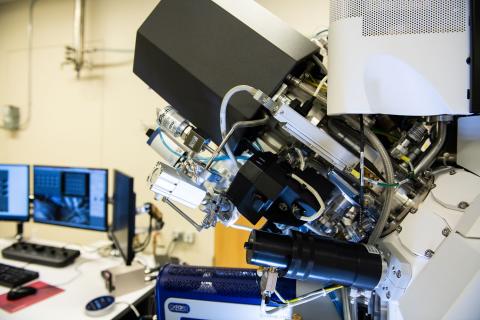Today, the most common methods used for medical device sterilisation are by gaseous ethylene oxide and by electron beam or gamma irradiation. With X-ray sterilisation about to enter the market, its material compatibility needs to be assessed at doses typically encountered during a sterilisation...
Filter results
Content type
Tags
- (-) Microscopy (3)
- (-) Sodium (3)
- Omics (18)
- Viruses (12)
- Health (9)
- Soil Microbiology (9)
- Virology (9)
- Virus (9)
- Mass Spectrometry (8)
- Genomics (7)
- High Throughput Sequencing (7)
- PerCon SFA (7)
- Imaging (5)
- Mass Spectrometer (5)
- Proteomics (5)
- Sequencer System (5)
- Synthetic Biology (5)
- Ions (4)
- metabolomics (4)
- Microbiome (4)
- Nanoparticles (4)
- sequencing (4)
- Spectroscopy (4)
- Electrical energy (3)
- Energy (3)
- Fungi (3)
- Metagenomics (3)
- RNA Sequence Analysis (3)
- microbiome stability (2)
- Spectrographic Analysis (2)
The literature on the effects of radiation on the properties of various polymers and composites has been briefly reviewed for the purpose of identifying polymeric materials that could be irradiated to improve their performance. Radiation treatment of polymers may lead to cross-linking or chain...
Category
Aluminate salts precipitated from caustic alkaline solutions exhibit a correlation between the anionic speciation and the identity of the alkali cation in the precipitate, with the aluminate ions occurring either in monomeric (Al(OH)4–) or dimeric (Al2O(OH)62–) forms. The origin of this correlation...
In highly alkaline “water-in-salt” Na2O/Al2O3/H2O solutions where the monomeric Al(OH)4– anion dominates, isolation of transitional species that seed crystallization of sodium aluminate salt hydrates has been challenging. For example, discrimination of dimeric [for example, Al2O(OH)62–] species via...
Crystallization of Al3+-bearing solid phases from highly alkaline Na2O:Al2O3:H2O solutions commonly necessitates an Al3+ coordination change from tetrahedral to octahedral, but intermediate coordination states are often difficult to isolate. Here, a similar Al3+ coordination change process is...
The innovative Elstar™ electron column forms the basis of the Helios NanoLab’s outstanding high resolution imaging performance. The Elstar features unique technologies, such as constant power lenses for higher thermal stability, electrostatic scanning for faster, higher accurate imaging, and unique...
Category
The Nikon Eclipse Ti2-E is a motorized and intelligent model for advanced imaging applications. Compatible with PFS, auto correction collar, and external phase contrast system. The base of choice for live-cell imaging, high-content applications, confocal and super-resolution.As research trends...
Category
Stanford Synchrotron Radiation Lightsource Experimental Station 14-3b is a bending magnet side station dedicated to X-Ray Imaging and Micro X-Ray Absorption Spectroscopy of biological, biomedical, materials, and geological samples. Station 14-3b is equipped with specialized instrumentation for XRF...



